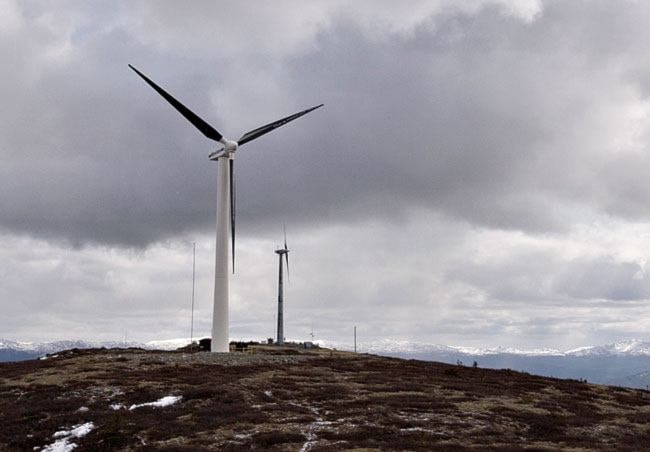The Kluane First Nation is moving ahead with plans to build three wind turbines, thanks in part to a new funding commitment from the Yukon government.
Last week, the government promised $1 million to the Kluane Community Development Corporation, which hopes the turbines will supply nearly a third of the electricity demand in Burwash Landing and Destruction Bay.
Both communities currently depend on diesel for their electricity. Chief Mathieya Alatini said developing renewable power is a good choice for economic and environmental reasons.
“It’s not going to totally replace diesel-generated electricity, but it’s going to be an option that will decrease operating costs and provide some clean energy,” she said. “It’s the right thing to do. The amount of carbon emissions that are going into the Earth’s atmosphere is crazy, and we’re contributing to that.”
Alatini said the First Nation has been working on developing wind power since 2011. A site has been chosen on a hill near Kluane Lake, and Alatini said bird monitoring and other surveys have already been completed.
The First Nation plans to submit an application to the Yukon Environmental and Socio-economic Assessment Board in the near future. If all goes according to plan, the turbines will be built next summer, and will generate clean electricity by the fall.
Colin Asselstine, general manager of the Kluane Community Development Corporation, said the project will likely cost $2.4 million.
He said the First Nation ultimately plans to turn a profit by selling electricity from the wind turbines into ATCO Electric’s micro-grid.
But as with many renewable-power developments, it’s a hefty price tag for a project that may take a while to pay itself off.
“It’s not an easy business model, working with renewable energy,” Asselstine said. “The return on investment is longer than any traditional investment.”
Aside from the Yukon government’s commitment, the First Nation is also contributing funding and continues to look for other funding sources.
This isn’t the Kluane First Nation’s first foray into renewable power. The community has already installed solar panels on one building, and uses a wood-chip boiler to heat several community buildings.
It has also drilled a geothermal well intended to heat the local greenhouse and water treatment facility.
Alatini said she hopes her First Nation’s initiatives will act as a model for other Yukon communities.
“I think it will be a great first go for a smaller community and for a community that’s on a diesel micro-grid,” she said.
Jay Massie, a manager with ATCO Electric, said the wind turbine project will be a first for a diesel-powered community in the Yukon. Currently, the two wind turbines on Haeckel Hill near Whitehorse are the only commercial-scale wind-power project in the territory.
“It’s new, for sure. It’s something else to dig into and make sure it gets integrated properly and successfully,” he said.
ATCO has yet to sign a power purchase agreement with the Kluane Community Development Corporation.
Ryan Hennessey, acting director of the energy branch at the Department of Energy, Mines and Resources, said there is potential for renewable energy projects in other Yukon communities, though he said clean energy will never be sufficient on its own.
“No community in the Yukon will ever be completely off diesel,” he said. “You ultimately need some kind of thermal back-up. You’re probably always going to have the diesel generators there.”
But he said the government does have plans to foster a biomass heating industry in the territory, and to develop an independent power production policy, which would allow renewable energy providers to sell their power into the grid.
Contact Maura Forrest at maura.forrest@yukon-news.com
